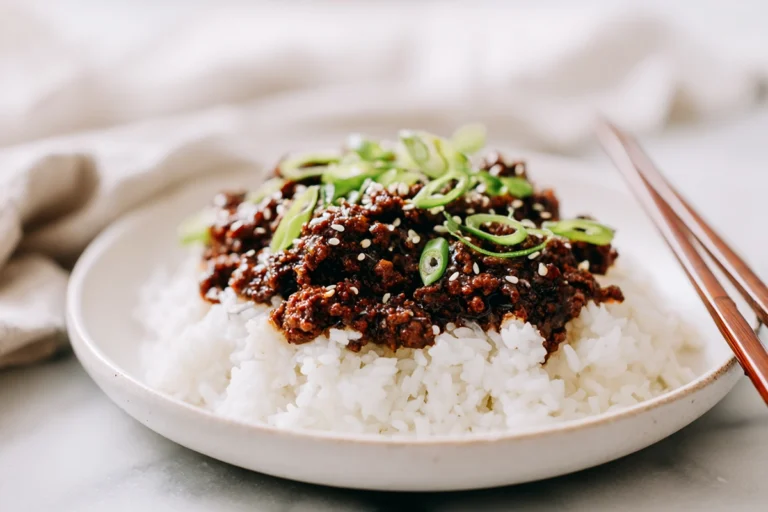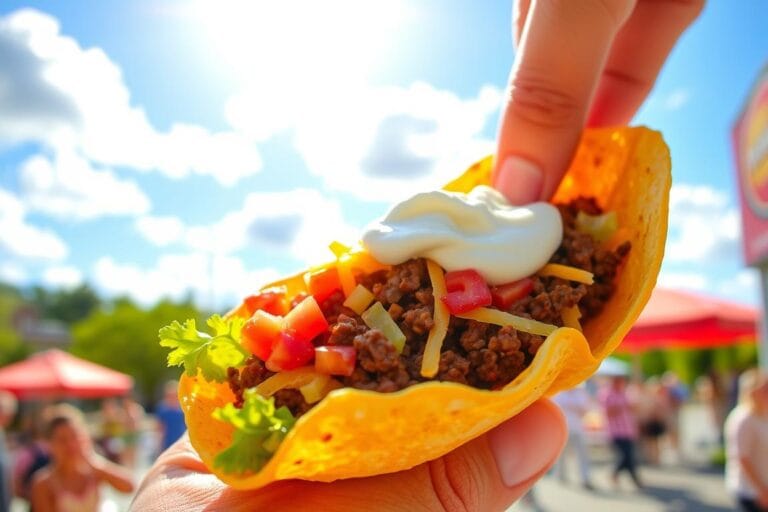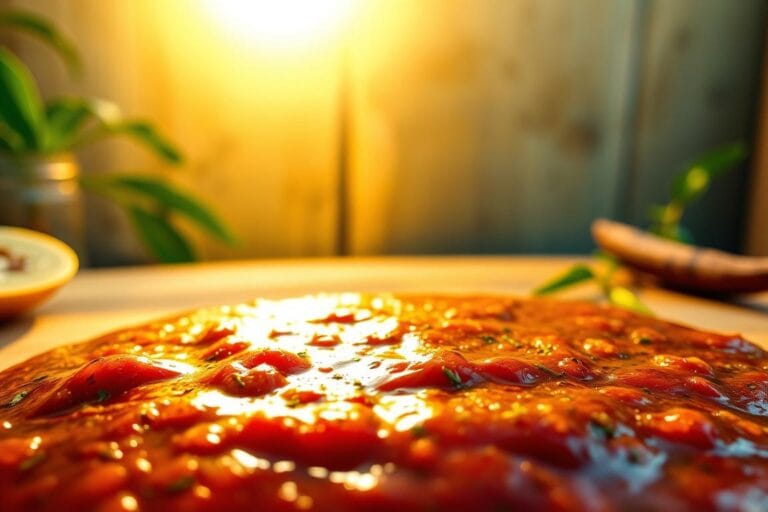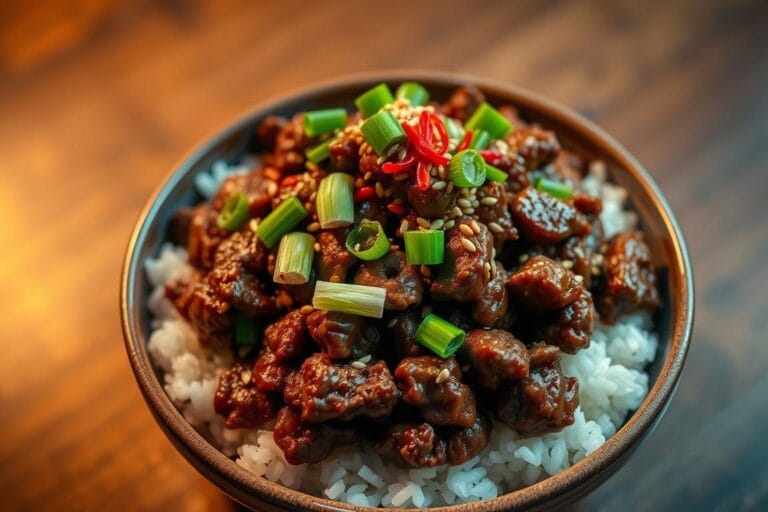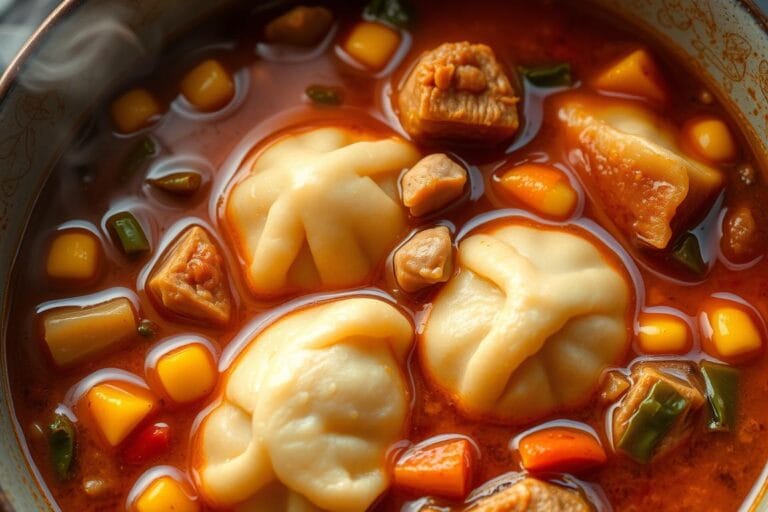The Perfect Prime Rib Roast: A Foolproof Guide to a Juicy, Tender Centerpiece
There’s something almost ceremonial about carving into a perfect prime rib roast. The crackle of its golden crust, the gentle pink glow inside—it’s more than dinner; it’s an event. I still remember the first time I made one for Christmas Eve. I was terrified I’d overcook it, but the moment that knife glided through the tender slices, I realized it wasn’t about perfection—it was about patience, timing, and trust in the process. If you’ve ever wanted to create a restaurant-quality roast at home, this guide will walk you through every step, from choosing the right cut to mastering that irresistible crust.
Table of Contents
Understanding the Cut – What Makes a Prime Rib Roast So Special
When you walk up to the butcher counter, it helps to know what you’re asking for. A prime rib roast, also called a standing rib roast, comes from the rib section of the cow—the same area that produces ribeye steaks. That’s why it’s naturally rich and marbled with fat, giving you incredible flavor and tenderness when roasted properly.
Bone-In vs. Boneless
Bone-in roasts hold heat differently, insulating the meat and giving you a juicier center. They’re a bit more dramatic for presentation too. Boneless roasts, on the other hand, are easier to carve and cook slightly faster. If it’s your first time making one, go for bone-in—it’s forgiving and flavorful.
Choosing the Right Grade
In U.S. grocery stores, you’ll usually find “Prime” or “Choice” beef. Prime has the most marbling, making it ideal for that melt-in-your-mouth texture. Choice is still excellent, especially if you’re on a budget. Always look for a thick, fat cap and bright red color—these are good signs of quality.
How Much to Buy
Plan on about one pound per person if it’s bone-in or three-quarters of a pound if boneless. For a family dinner, a three-rib roast usually feeds six beautifully.
Print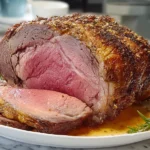
The Perfect Prime Rib Roast
- Total Time: PT2H45M
- Yield: 6 servings 1x
Description
A foolproof guide to creating the perfect prime rib roast with a crispy garlic-herb crust, tender pink center, and juicy flavor — ideal for holiday dinners or special occasions.
Ingredients
1 prime rib roast, 5 pounds, bone-in or boneless
2 tablespoons kosher salt
1 tablespoon freshly ground black pepper
4 cloves garlic, minced
3 tablespoons unsalted butter, softened
2 teaspoons chopped fresh rosemary
2 teaspoons chopped thyme
1 tablespoon olive oil (optional for searing)
Instructions
1. Bring the prime rib roast to room temperature for even cooking.
2. Coat the roast generously with kosher salt and let it rest uncovered in the fridge overnight or for at least one hour.
3. Preheat the oven to 250°F for the reverse sear method or 450°F if using the traditional high-heat start.
4. Mix butter, garlic, rosemary, thyme, and black pepper; rub the mixture over the roast.
5. Place the roast on a rack in a roasting pan, fat side up.
6. Roast slowly at 250°F until the internal temperature reaches 120°F for medium-rare.
7. Increase oven temperature to 500°F for 10–15 minutes to create a golden crust.
8. Remove from oven and tent loosely with foil; let rest 20 minutes before carving.
9. Slice against the grain and serve with au jus or horseradish sauce.
Notes
For best results, use a meat thermometer to ensure accurate doneness.
Letting the roast rest is crucial for keeping it juicy.
Serve with mashed potatoes, roasted vegetables, or Yorkshire pudding for a classic pairing.
- Prep Time: PT15M
- Cook Time: PT2H30M
- Category: Main Course
- Method: Roasting
- Cuisine: American
Nutrition
- Serving Size: 1 slice (approx. 8 oz)
- Calories: 620
- Sugar: 0g
- Sodium: 980mg
- Fat: 48g
- Saturated Fat: 22g
- Unsaturated Fat: 24g
- Trans Fat: 1g
- Carbohydrates: 1g
- Fiber: 0g
- Protein: 52g
- Cholesterol: 190mg
Ingredients & Proportions
Here’s what you’ll need for a 5-pound roast serving 6 people:
- 1 prime rib roast, 5 pounds, bone-in or boneless
- 2 tablespoons kosher salt
- 1 tablespoon freshly ground black pepper
- 4 cloves garlic, minced
- 3 tablespoons unsalted butter, softened
- 2 teaspoons chopped fresh rosemary
- 2 teaspoons chopped thyme
- 1 tablespoon olive oil (optional for searing)
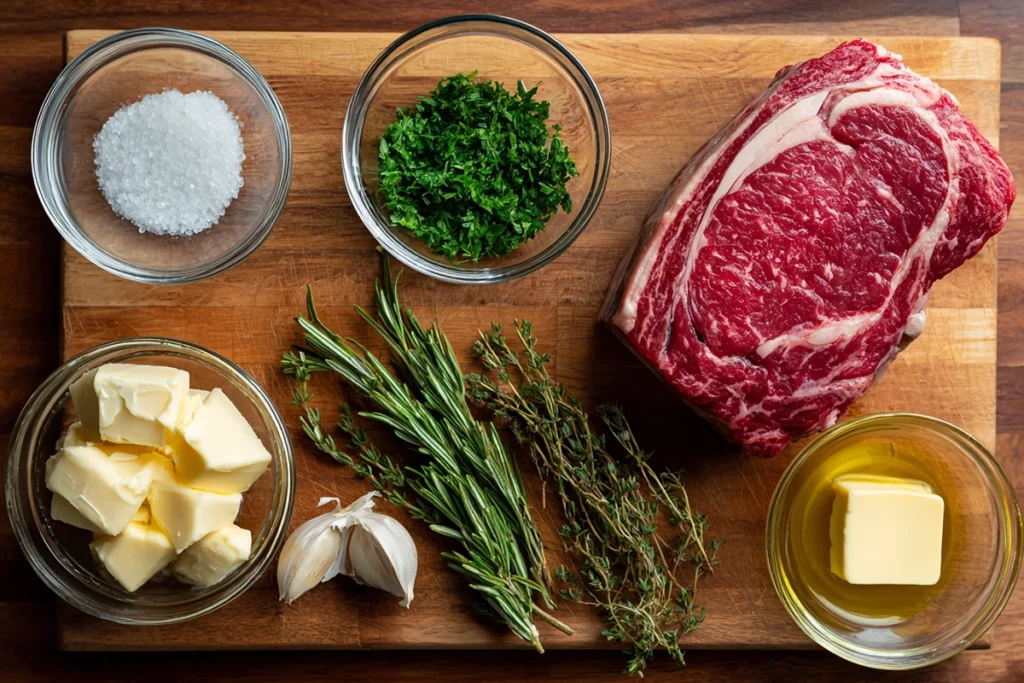
Prep and Seasoning – Setting the Stage for Success
Before you even think about turning on the oven, you need to prep your meat properly. This is where the magic begins.
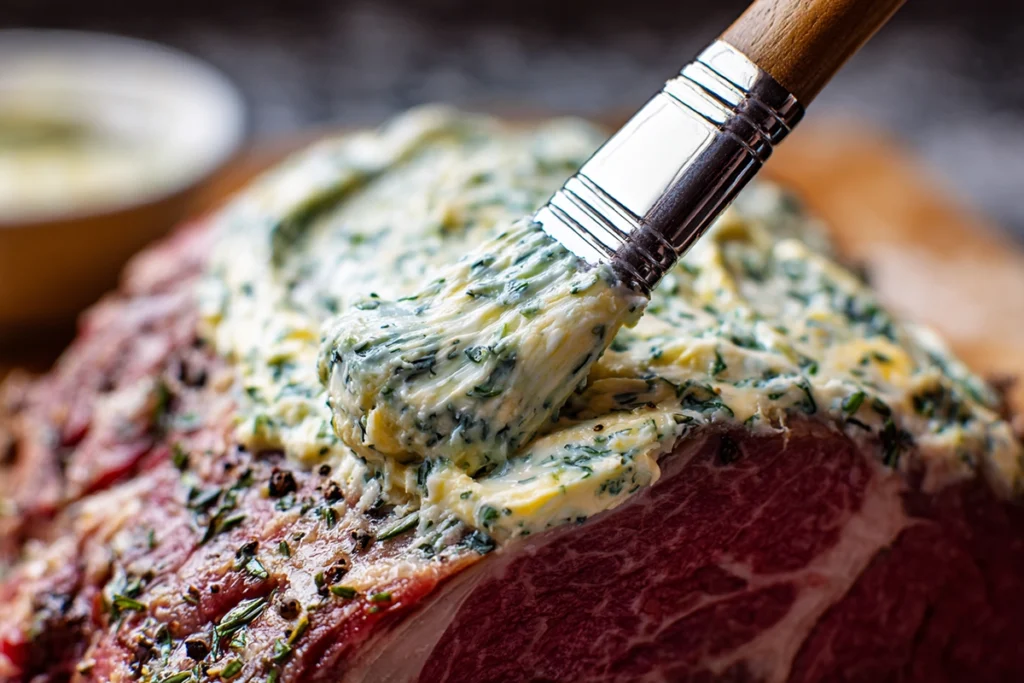
Bring to Room Temperature
Take the roast out of the fridge a few hours before cooking. Letting it come to room temperature ensures even roasting and prevents those overcooked edges.
The Dry Brine Secret
Coat the entire surface with kosher salt and let it rest uncovered in the fridge overnight. This step draws out moisture, then reabsorbs it, seasoning the meat all the way through. When you’re short on time, even an hour of rest after salting makes a noticeable difference.
Building Flavor
For a classic garlic-herb crust, mix softened butter with minced garlic, rosemary, thyme, and black pepper. Rub it generously over the roast right before cooking. Some cooks swear by olive oil, but butter helps the herbs stick and creates that iconic crust.
Tools You’ll Need
Have a roasting pan with a rack, a reliable meat thermometer, and a sharp carving knife ready. These small details can make or break your experience.
Cooking Methods – How to Achieve the Perfect Crust and Temperature
Cooking a perfect prime rib roast is all about controlling heat. You’re not just cooking meat—you’re crafting texture.
The Reverse Sear Method
If you’ve ever wondered how restaurants get that uniform pink from edge to edge, this is the secret. Start your roast low and slow at 250°F until it’s about 10°F below your target temperature (for medium-rare, that’s around 120°F). Then crank up your oven to 500°F for 10–15 minutes to form that irresistible, crusty exterior.
The Traditional High-Heat Start
This classic method begins with a blast of high heat—450°F for 20 minutes—to sear the outside, followed by a lower temp (325°F) to finish cooking. It’s faster, though slightly less even than the reverse sear.
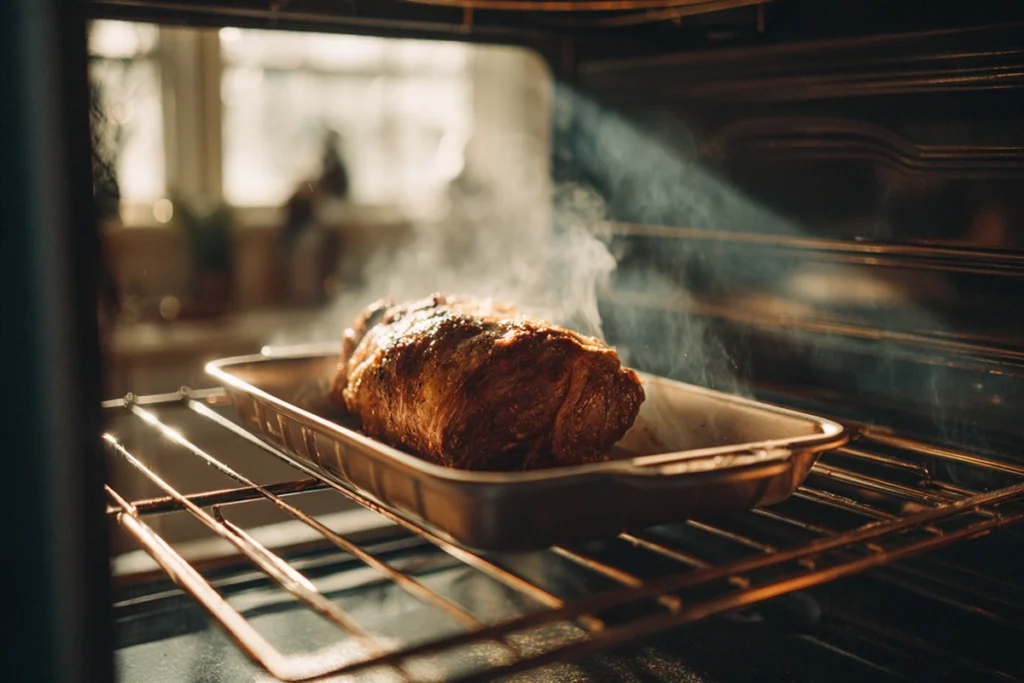
Doneness Guide
- Rare: 120°F internal temperature
- Medium-Rare: 130°F (recommended)
- Medium: 140°F
Always rest your roast at least 20 minutes before slicing; it lets the juices redistribute and keeps each bite succulent.
Carving and Serving
Slice against the grain for tender bites, and use the bones as a natural guide if you’ve gone bone-in. Serve with a drizzle of pan juices or a classic horseradish cream for a bright contrast to the rich meat.
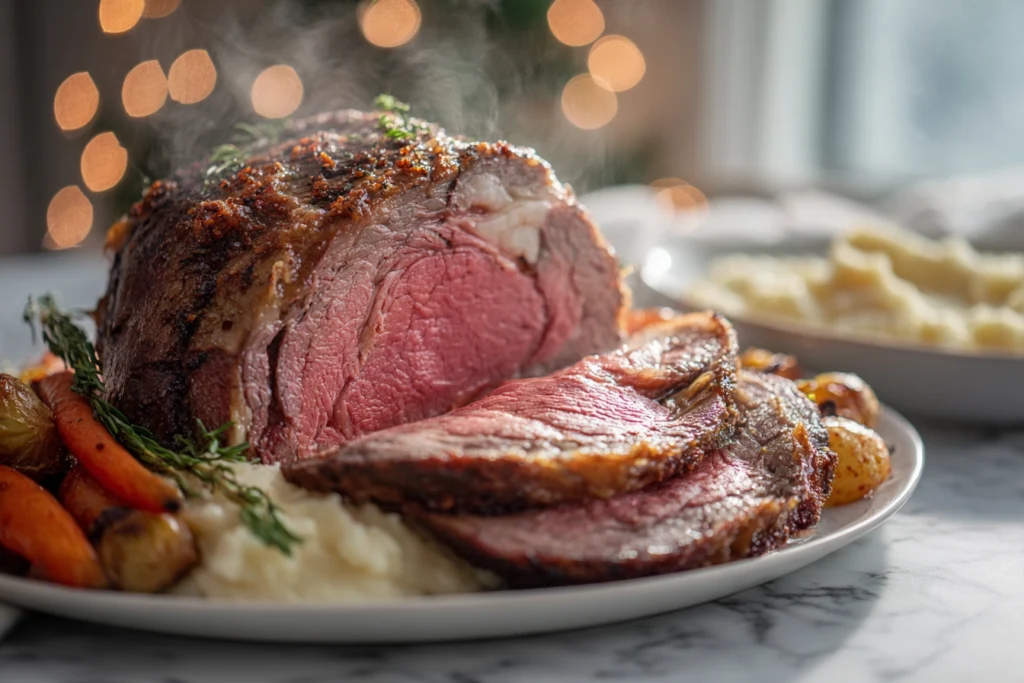
Dietary Variations – How to Adapt for Every Lifestyle
Even a perfect prime rib roast can fit different dietary needs with simple adjustments.
Gluten-Free
Most roasts are naturally gluten-free. Just skip any flour-based thickeners when making pan gravy. Use cornstarch or arrowroot powder instead.
Low-Calorie or Leaner Version
Choose a Choice grade roast instead of Prime. Trim excess fat and serve with lighter sides like roasted vegetables or salad instead of mashed potatoes.
Halal-Friendly
Ensure your beef is certified halal and use olive oil instead of butter in your seasoning rub. Double-check that your sauces and seasonings don’t contain alcohol-based ingredients.
Dairy-Free
Replace butter with a neutral oil or dairy-free margarine. Avocado oil works beautifully—it can handle the high roasting temperatures without burning.
Vegan Alternative
If you’re serving mixed guests, consider offering a plant-based “roast” option made from lentils, mushrooms, or seitan. It can mimic that same hearty, comforting feel when paired with the same herbs and sides.
Storage and Leftovers – Making the Most of Every Bite
When you’ve spent hours crafting a show-stopping prime rib roast, you don’t want leftovers to go to waste.
Cooling and Storage
Let the roast cool completely before storing. Wrap tightly in foil or place in airtight containers. It’ll last up to five days in the refrigerator or three months in the freezer.
Reheating Without Drying Out
To keep that pink center, warm slices in a 250°F oven covered with foil for about 10 minutes. Avoid microwaving—it can toughen the meat.
Creative Leftover Ideas
Turn cold slices into gourmet sandwiches with caramelized onions and provolone. Chop them into a rich beef stroganoff or toss thin cuts into a quick stir-fry. Each bite carries that same luxurious flavor, even days later.
Every time you make a perfect prime rib roast, you’ll gain a little more confidence—and maybe even start a new family tradition. The beauty of this dish lies in its simplicity: a well-seasoned cut, careful roasting, and patience. Once you carve through that crust and see the rosy center, you’ll understand why this classic has remained an American favorite for generations.
FAQ
What internal temperature should a prime rib roast reach for medium-rare?
For a beautifully cooked, perfect prime rib roast, aim for an internal temperature of about 130 °F before resting. After a 15-20 minute rest, it will rise to around 135 °F, giving you a tender, juicy medium-rare finish.
How much prime rib should I buy per person?
A good rule of thumb for a prime rib roast is about 1 pound per person if it’s bone-in, or roughly ¾ pound per person for boneless. This considers shrinkage during roasting and ensures everyone gets a hearty portion.
Do I need to let the roast rest before carving?
Yes — letting your prime rib rest is essential. After removing it from the oven, tent it loosely with foil and let it sit for at least 20 minutes. This pause lets the juices redistribute so each slice stays succulent, not dry.
Bone-in vs boneless: which is better for prime rib?
Bone-in usually offers more flavor and better heat distribution, helping you get that ideal crust and pink center. Boneless is easier to carve and often simpler to handle in smaller kitchens — both can be excellent if cooked with care.
Can I cook the roast ahead of time and reheat it later?
You can, but it takes some planning. After the roast reaches your target doneness, chill it quickly and store it in the fridge. When ready to serve, gently reheat at a low oven temperature and finish with a high-heat blast for the crust. This preserves texture and flavor without overcooking.
Get inspired with more mouthwatering recipes! Follow me on Facebook, Pinterest, and subscribe to YouTube for new cooking ideas every week.
What Are Our Readers Saying?
There are no reviews yet. Be the first one to write one.


